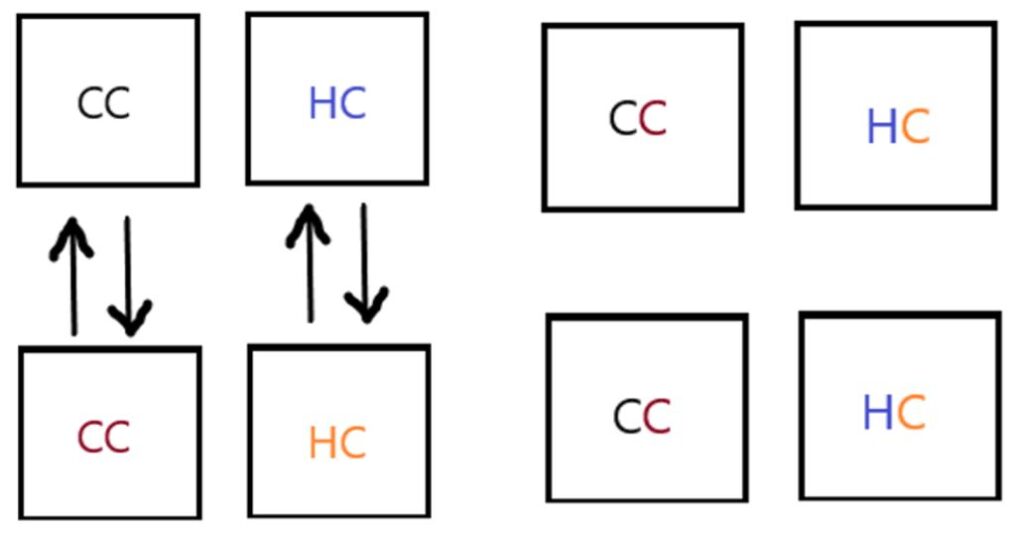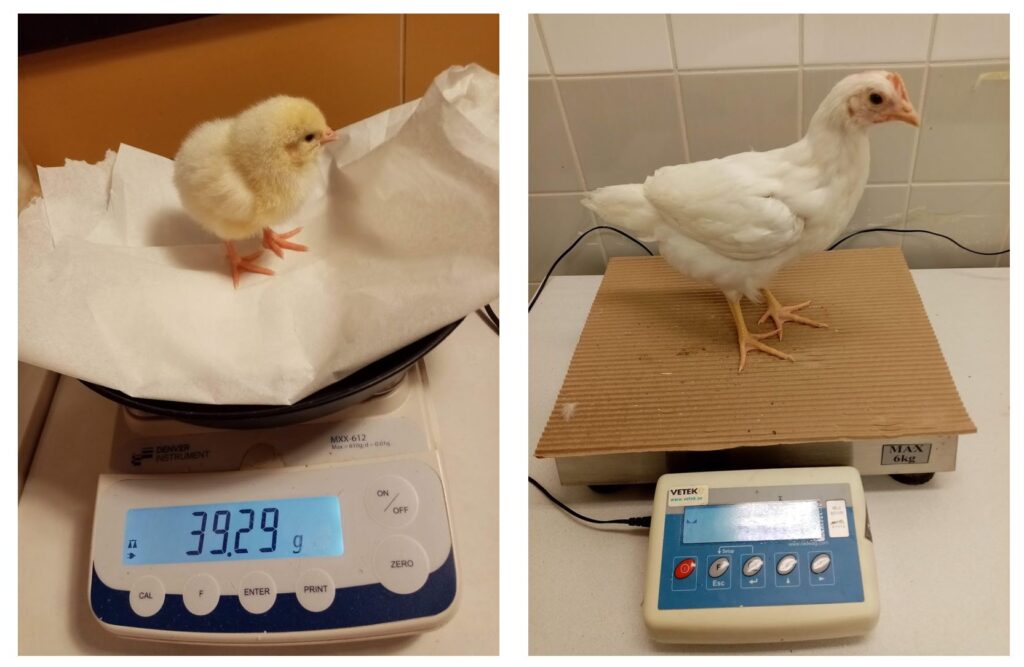Experimental animals:
White leghorn hybrids (females) from a commercial hatchery split into two groups
Hatchery group (HC) (N=105)
- Incubated, hatched, vaccinated, and processed at the commercial hatchery
- Underwent approximately seven hours of transportation to the LiU research facilities
Control group (CC) (N=71)
- Newly laid eggs transported to LiU
- Incubated, hatched, and processed at LiU in concordant time with the HC group
Experimental timeline and procedures:

Procedural methods
Over the experimental timeline, both groups were subjected to two different stressors that would be commonly experienced during their lifetime. The stress susceptibility to these two stressors was evaluated by a number of tests to measure both, physiological, as well as behavioral responses.
Tonic immobility procedure
- Measured the fear in regards to one hour of transport as a stressor
- Baseline recorded one day before the transportation
- Treatment recorded one day after the transportation
- Recorded values: number of inductions into tonic immobility (max. 3), first beep, first voluntary head movement, and the righting time
- The effects of transportation were analyzed, as well as the differences between the treatment groups.

Regrouping as a stressor
- Evaluated by one hour 1-0 group behavioral observations that were repeated three times: baseline before regrouping, immediately after the regrouping, and second baseline two days after regrouping. Observations were not analyzed statistically, but percentages of occurrences were compared.
- Evaluated by blood plasma corticosterone analysis, baseline two days before and treatment one day after regrouping. The effects of regrouping, as well as the intra-group differences, were analyzed.
- Since each experimental group was housed across two pens per treatment, half of each pen within the treatment was swapped.

Weekly weighing
- The difference between the treatment groups was analyzed for each weighing day.